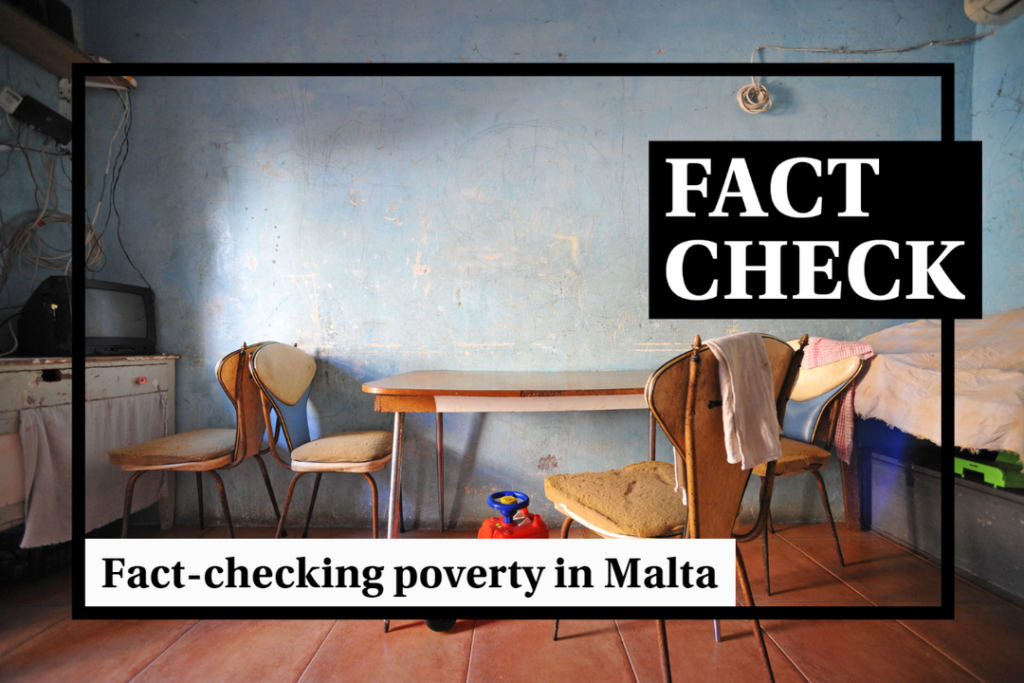The government last month said in a statement that the rate of people at risk of poverty or social exclusion was now 4.5 percentage points lower than it was in 2013, pointing to newly published data about poverty in Malta.
Reacting to this, the opposition Nationalist Party accused the government of misleading the public and misrepresenting the extent of poverty in Malta, arguing that 100,000 people in Malta are now living in constant threat of poverty.
Ivan Bartolo, shadow minister for social welfare, said that the government’s claim that the number of people at risk of poverty or social exclusion has dropped since 2013 does not reflect the reality that a fifth of the population is at risk of poverty.
Several readers have written to Times of Malta to ask whether the number of people at risk of poverty has really dropped since 2013 or if poverty is actually on the rise.
The answer? It all depends on what measurement is used.
How is the risk of poverty measured?
Statisticians have developed a model to track the risk of poverty and social exclusion by looking at three specific metrics. These metrics look into how many people fall below the poverty line, how many suffer from material deprivation, and how many live in households
A study by Malta’s Central Bank explains that these three metrics work together to identify monetary poverty, resource poverty and unutilised labour potential.
The three metrics are then aggregated to measure the overall risk of poverty or social exclusion within a society.
Are there more people beneath the poverty line?
The first metric, the at-risk of poverty rate tries to understand how many people earn less than 60% of the country’s median income, considered the poverty threshold, regardless of whether or not this results in a low standard of living.
Data published last month shows that the at-risk-of-poverty rate is now 16.7%, higher than the 15.7% registered in 2013. In practice, this means that an estimated 86,000 people earn less than 60% of the median income, compared to 65,000 in 2013.
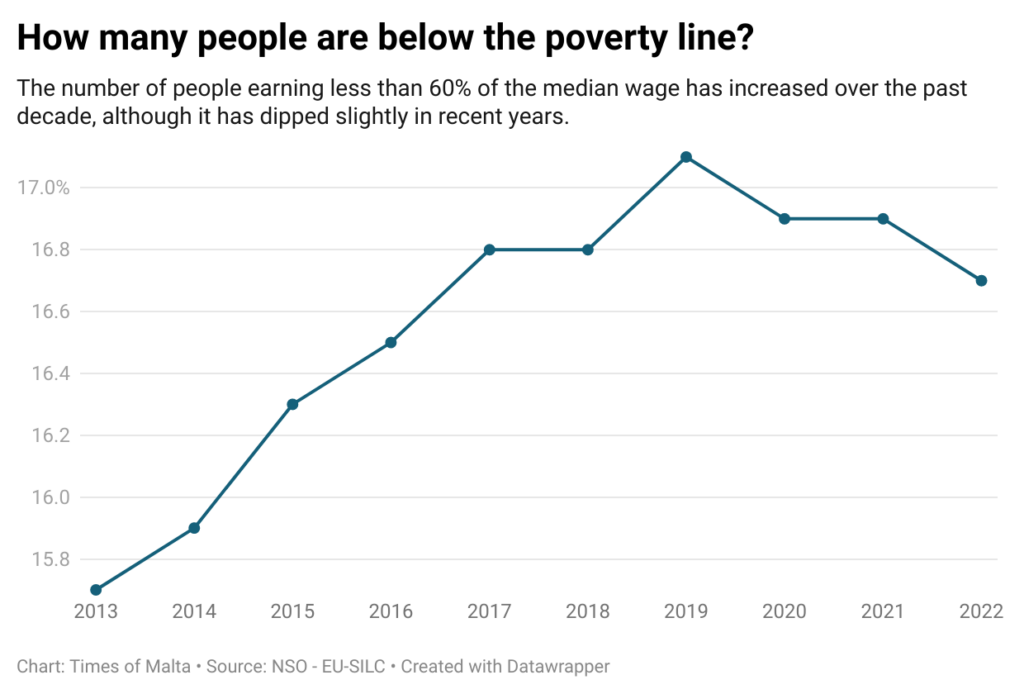
While this does not necessarily mean that their standard of living is alarmingly low, it does suggest that the difference between high and low earners has increased over the past decade and there are now more people lagging behind others in terms of income.
A 2022 study reached a similar conclusion, finding that “the poverty threshold has risen faster than average income”, resulting in more people gradually falling below the poverty line.
Are more people materially deprived?
The second metric examines material deprivation by asking people whether they can afford a list of 13 essential items or situations, such as paying for an internet connection, keeping their house warm or facing unexpected financial expenses.
Households who are unable to afford five out of the thirteen items listed are seen to suffer from material deprivation, while those who cannot afford seven items are considered severely materially deprived.
NSO data shows that material deprivation has decreased significantly over the past decade.
According to the data, 19.4% of people were materially deprived in 2013, with a further 9.5% suffering from severe material deprivation. This has shrunk to 9.6% and 4.9% respectively in 2022.
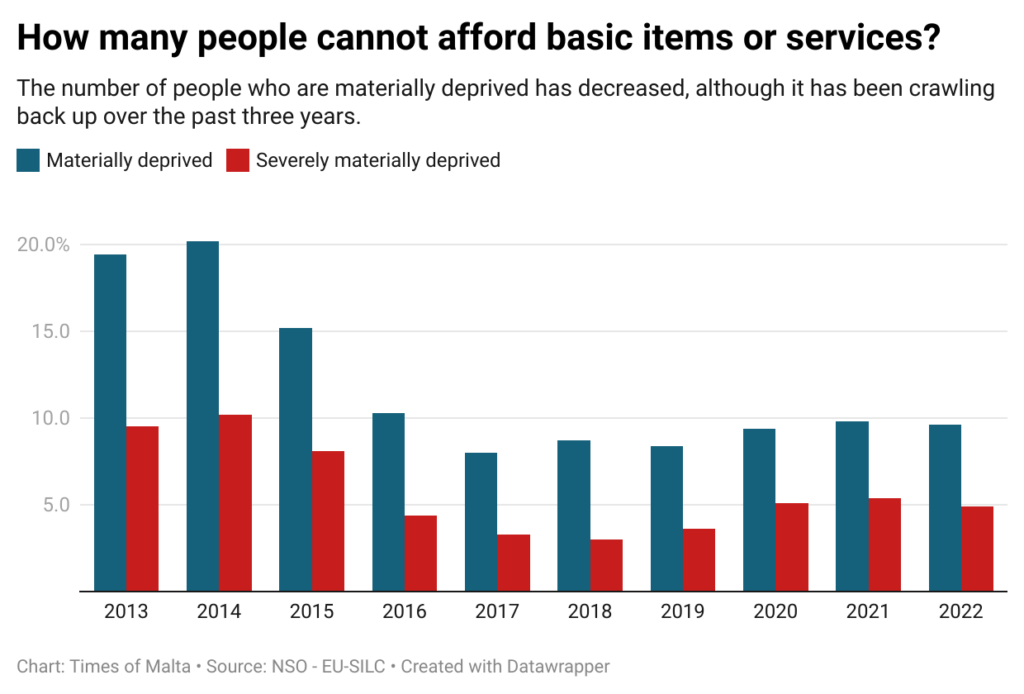
In total, it is estimated that some 75,000 people are materially deprived today compared to 119,000 a decade ago.
How does work intensity feature?
The final metric looks at how many people live in low-intensity workload households, which are households where adults spend less than 20% of possible working hours working.
Almost three-quarters of people living in low work-intensity households today are at risk of poverty, significantly higher than the 65% registered in 2013. This suggests that it has become more difficult for single-income families to cope with living expenses.
Has the overall risk of poverty decreased?
Aggregating these three metrics reveals that there has been a decrease in the overall risk of poverty or social exclusion over the past decade, shrinking from 24% in 2013 to 20.1% in 2022.
Nonetheless, with Malta’s overall population having increased significantly during this period, there are now an estimated 4,000 more people at risk than there were a decade ago.
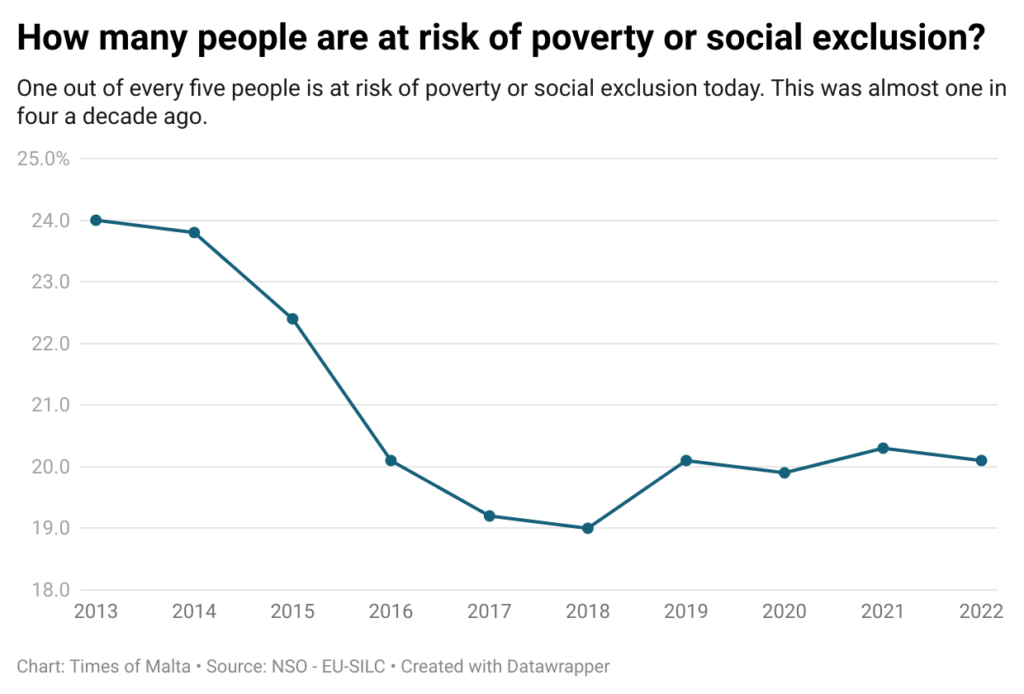
While people of working age and children have experienced a significant drop in the risk of poverty and social exclusion, the opposite is true of older adults. One in three people over the age of 65 are now believed to be at risk, significantly higher than the 20% reported in 2013.
Are people earning more today?
NSO data shows that the average gross income of a household has shot up by over 50% over the past decade, from €28,379 in 2013 to €43,186 in 2022. It is likely that this is driven by several factors, not least the dramatic increase in women in the workplace, which stood at just 47% in 2013 and is now at 74%.
However, people are now left with a lesser portion of their gross income in their pocket compared to 2013. While households previously kept 83% of their earnings as disposable income, this has now shrunk to just over 80%.
In total, a household’s overall disposable income has increased from almost €23,500 in 2013 to a little under €35,000 last year.
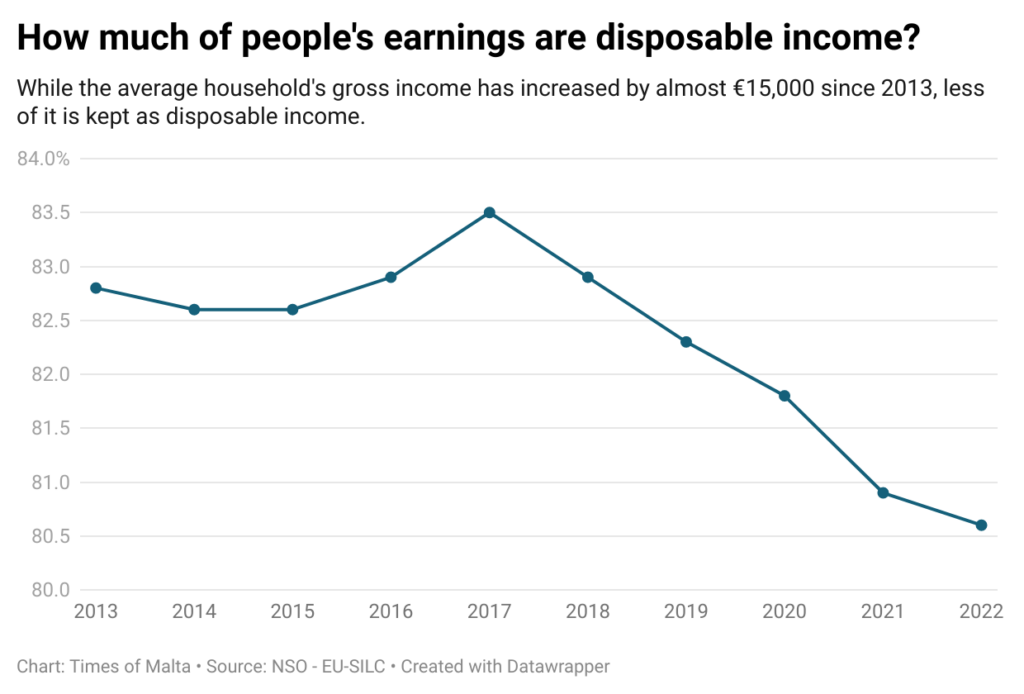
Has income inequality increased?
Aside from the growing number of people below the poverty threshold, several other metrics also suggest that there is a gradually widening gap between high and low earners.
NSO data shows that income inequality has increased from 27% in 2013 to 31% in 2022.
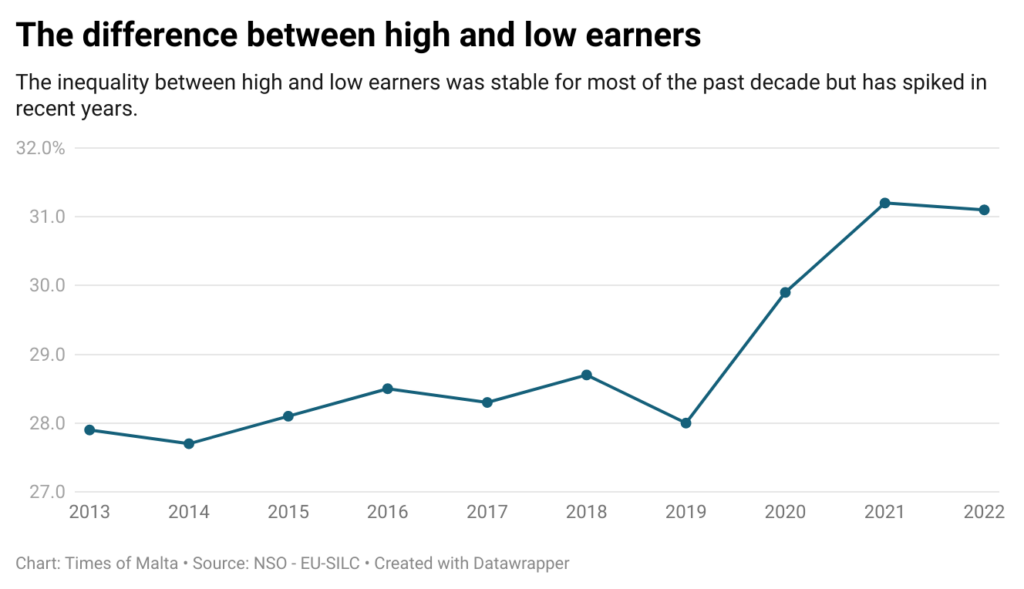
Likewise, the top 20% of earners are now believed to earn 4.8 times more than the bottom 20%, a slight increase over the 4.1 reported in 2013.
A 2021 study by economists at the University of Malta looking into income inequality between 2005 and 2018 found similar “modest” increases in inequality over the years.
Verdict
The overall risk of poverty and social exclusion has decreased by almost 4% over the past decade. Likewise, significantly fewer people are believed to be suffering from material deprivation and unable to afford to pay for basic expenses.
However, the difference between high and low earners appears to be increasing and there are now more people falling below the poverty line and earning significantly less than the median income than there were in 2013.
The income of households has increased significantly since 2013, but a slightly lesser share of it is being kept as disposable income.
The Times of Malta fact-checking service forms part of the Mediterranean Digital Media Observatory (MedDMO) and the European Digital Media Observatory (EDMO), an independent observatory with hubs across all 27 EU member states that is funded by the EU’s Digital Europe programme. Fact-checks are based on our code of principles.
Let us know what you would like us to fact-check, understand our ratings system or see our answers to Frequently Asked Questions about the service.

